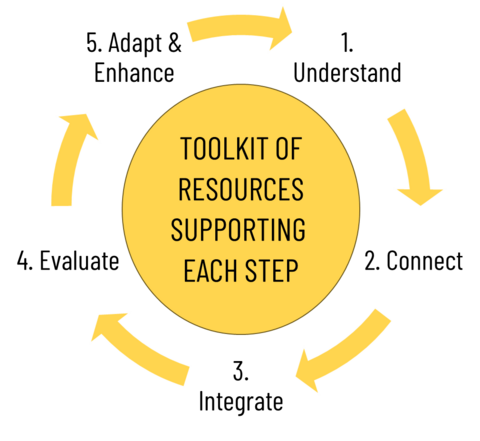Framework for integrating sustainability into curriculum
To support departments and faculty considering sustainability in their curriculum, a simple yet flexible framework was developed to meaningfully integrate sustainability throughout programs of study as relevant. It can be used to address the unique needs of your department and aid you in working through the process to understand the next steps for your department. Within the framework you will find guiding questions and outlining points that can lead discussion to clearly identify opportunities for integration.
This framework pulls together information and resources so units don’t need to reinvent the wheel. This toolkit has connected supports for the work in an effort to bring together departments the resources they need.
If you're not convinced yet, or are looking for resources to explain the value of sustainability in curriculum to your peers, review why sustainability should be in your department's curriculum.
How to use the framework to guide curricular discussions
Every department will engage with sustainability differently as relevant to the discipline. You may have already embedded sustainability in your curriculum and offer opportunities for students to build on their understanding throughout the program, or this may not be something you have considered yet. Depending where you are in your sustainability journey, different steps in the framework will be relevant.
While some foundational understanding of what sustainability is and why it is relevant is necessary for curricular change, this may be something your department has already reviewed or needs to revisit. This framework is intended to be used in collaboration with a department or curriculum committee to understand the current status of sustainability integration within the curriculum, and identify meaningful next steps.
If you are feeling stuck and it is not clear where to go next, consider connecting with some of the excellent supports on campus available to help work through this.
